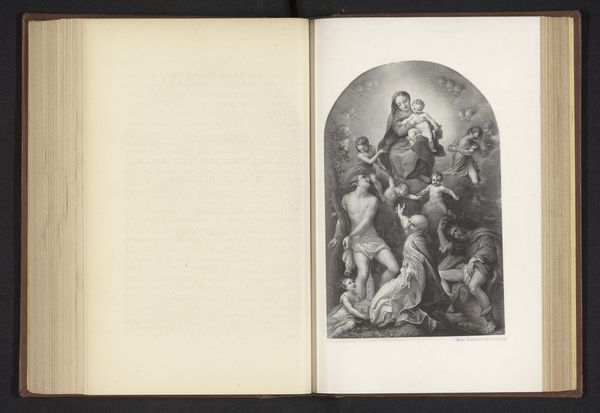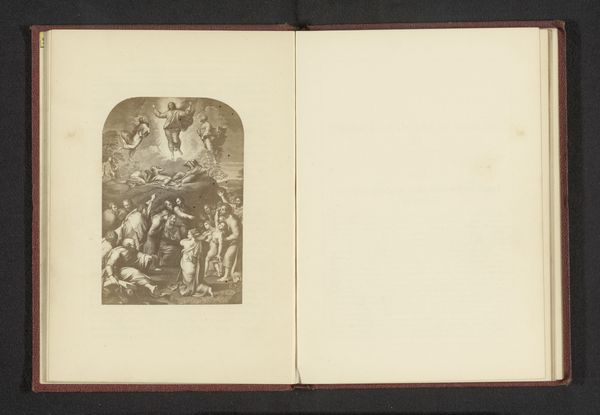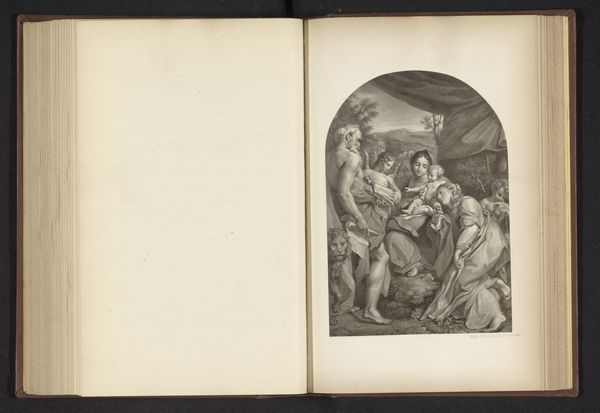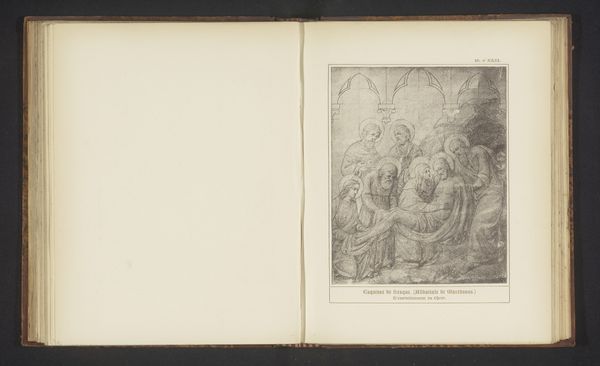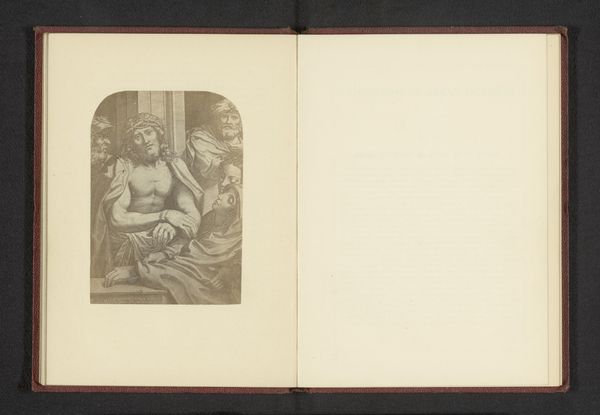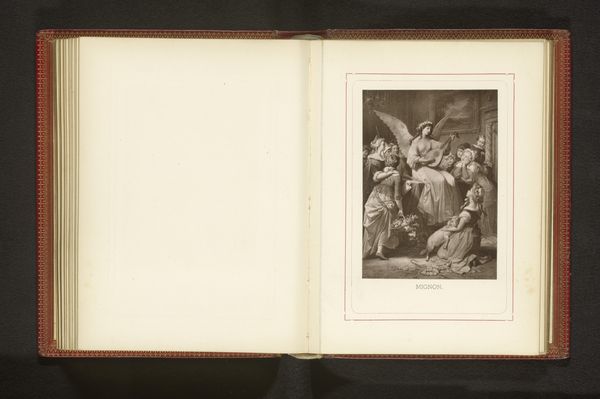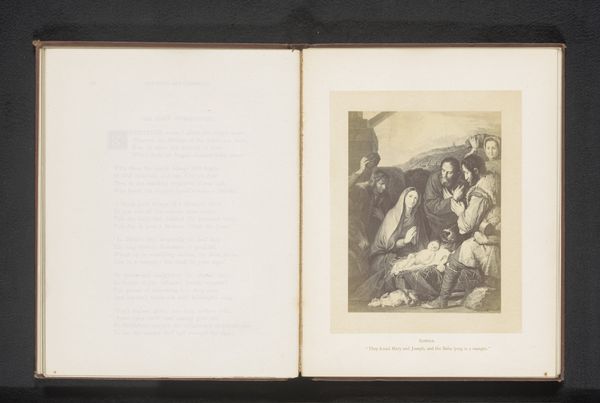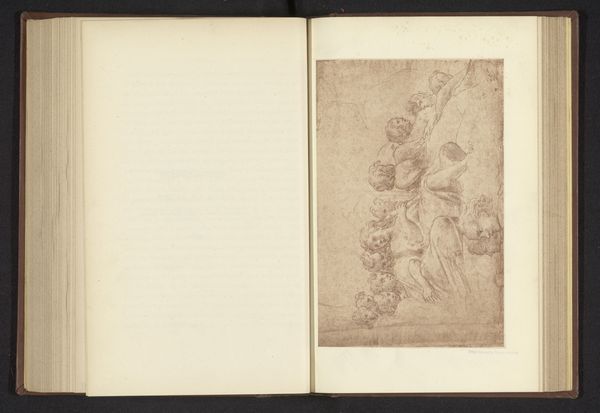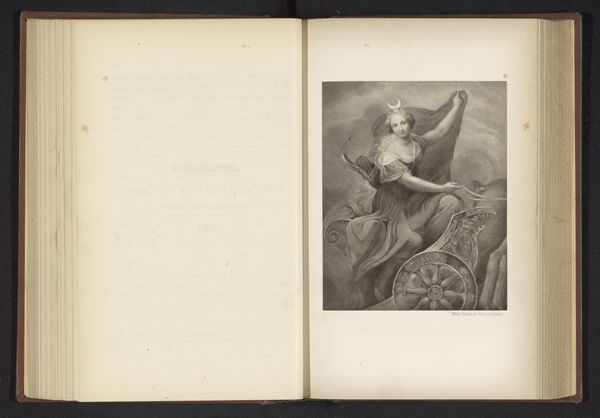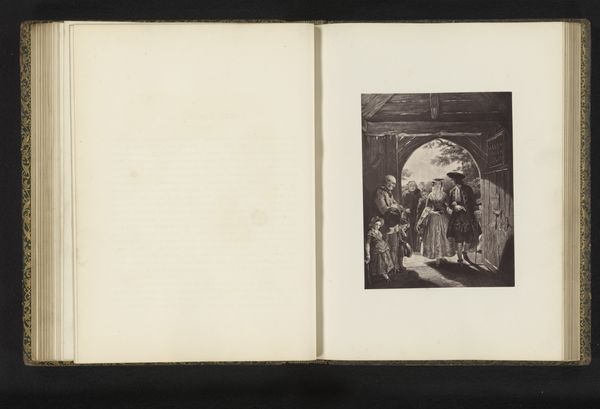
Fotoreproductie van een prent naar een schilderij, voorstellende de tronende Madonna met de heilige Hiëronymus en Jacobus before 1876
0:00
0:00
anonymous
Rijksmuseum
print, engraving
#
portrait
#
medieval
#
ink paper printed
# print
#
paper texture
#
history-painting
#
italian-renaissance
#
engraving
#
historical font
Dimensions: height 169 mm, width 124 mm
Copyright: Rijks Museum: Open Domain
Editor: So, this is "Fotoreproductie van een prent naar een schilderij, voorstellende de tronende Madonna met de heilige Hiëronymus en Jacobus," or "Photoreproduction of a print after a painting, depicting the enthroned Madonna with Saint Jerome and James" by an anonymous artist, dating from before 1876. It's a print using ink on paper. It looks like it's bound in a book. What do you see in this piece? Curator: I'm drawn to the interplay between the fine lines of the engraving and the subject matter. The reproductive nature of the print itself speaks volumes. It takes a painting, originally a unique object of high art labor, and democratizes it through mass production on paper. We must ask how that transformation of materiality affects the reception and understanding of the image. Editor: That’s interesting. So the value isn’t in the image itself but the means of its creation and distribution? Curator: Precisely. The transition from unique painting to a reproduced print highlights how access and consumption are shaped by the means of production. Consider the labor involved in both the original painting and the subsequent engraving process, and how this impacts our understanding of artistic skill and value. And the paper it's printed on: where did that come from? Who made it? What social conditions allowed for its creation? Editor: I never thought about that. So, seeing it in a book also influences our reading of it, almost like context collapse? Curator: Exactly. Think about the economics behind printing. It invites questions about accessibility. Who owned this book? What social class would consume such images? This "Photoreproduction" embodies a pivotal shift in art's accessibility and consumption – from exclusive artwork to commodity. The transformation tells a powerful material story, wouldn't you agree? Editor: Definitely. Seeing the print as a mass-produced object really shifts my perspective on its historical and social impact. I never really thought about paper in this detail before!
Comments
No comments
Be the first to comment and join the conversation on the ultimate creative platform.
